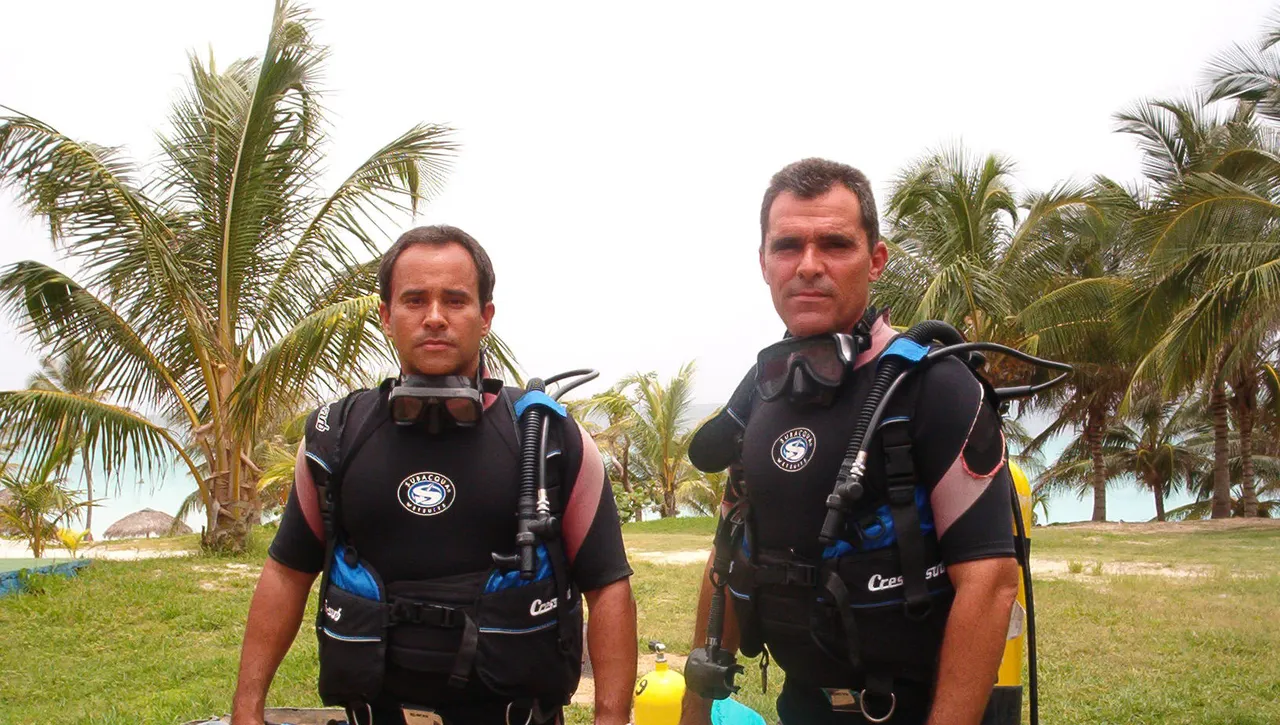
Diving in the transparent and warm waters of Cuba, with the beauty of the seabed and its rich biodiversity, make me enjoy a unique experience, relaxing and full of emotions.
I live near the coast, and since my childhood I have been motivated by fishing, both in lagoons and dams using nylon line with hooks, as well as underwater hunting in the sea.
I remember that during the so-called Special Period, in the 90s, when the availability of food in the country for the generality of the people was reduced, I often went to the sea with friends, to ensure the protein source for my family.
As time went by, when I finished my medical career, I dedicated myself to Natural Medicine, and we created the “Acualina” project of Environmental Education. I stopped hunting fish, I felt sorry to do it, because my thinking was already attuned to a new reality and ecological ideas.
I sold all my collection of Italian pneumatic speargun of the Mares brand, of the Sten family, and my 5 complete modules for autonomous diving or SCUBA.
I only left as a souvenir, some snorkeling gear and these objects that I will present to you today in my post.
Diving mask:
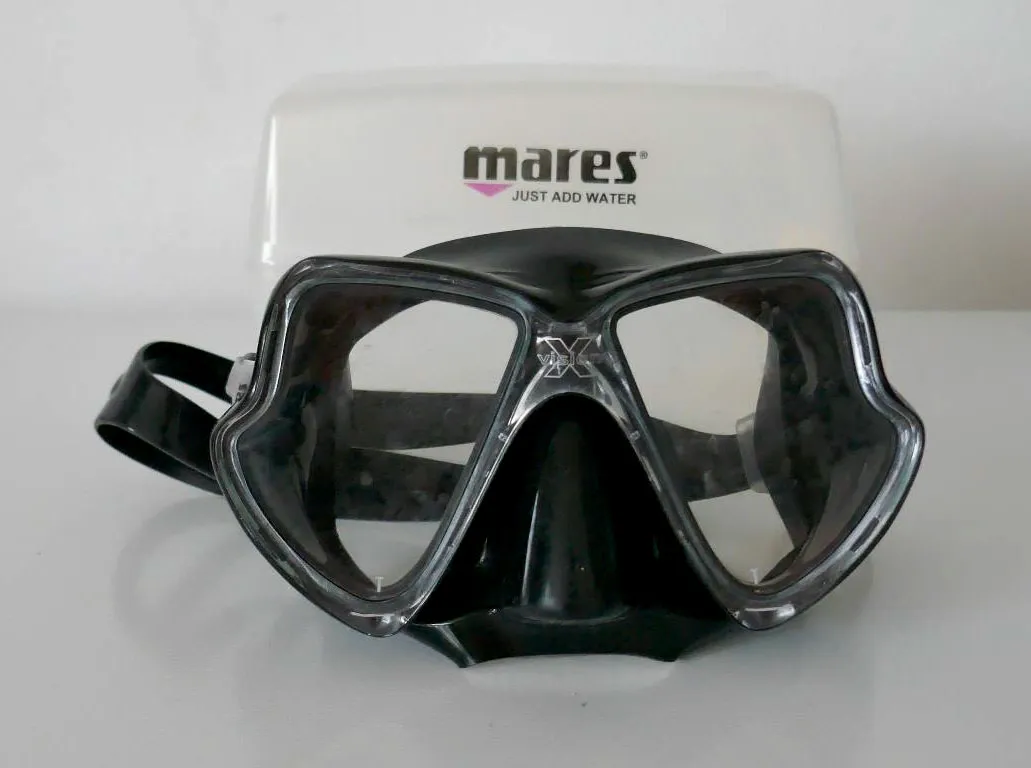
They come in different sizes, the smallest ones being the ones used for freediving and underwater spearfishing. Having less air space makes it easier for you to compensate for your ears and paranasal sinuses.
A mask is a crucial part of the equipment, since it is the one that allows you to see the marine environment. You should choose a mask made of silicone material, so that it fits your face well and is not uncomfortable. It is better if it is black. The sun's rays will not bother you as it usually happens with silicone in the transparent silicone ones.
Always use tempered glass, never plastic, for better visibility and less fogging.
Snorkel:
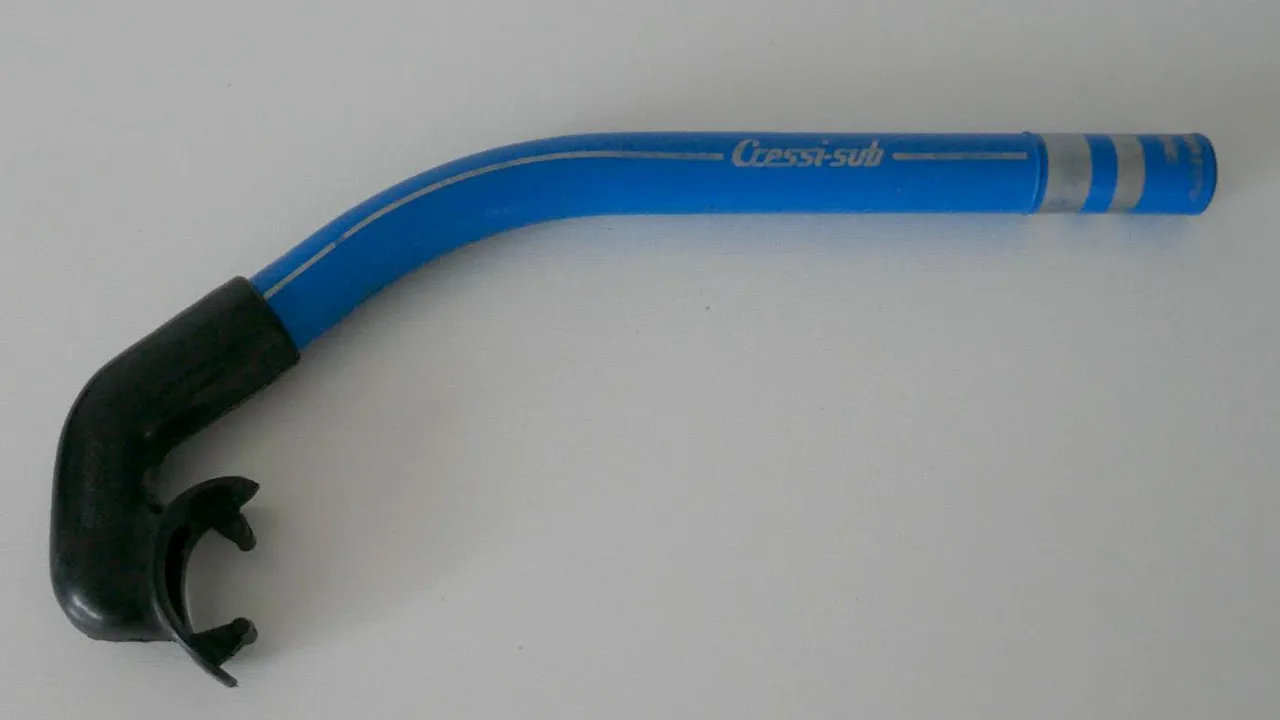
It is the tube that allows you to breathe, while swimming on the surface with your head in the water.
They should not be purchased with a thin diameter, nor long. That way, we avoid breathing effort and carbon dioxide retention, which can cause poisoning. The mouthpiece should be made of silicone.
Fins:
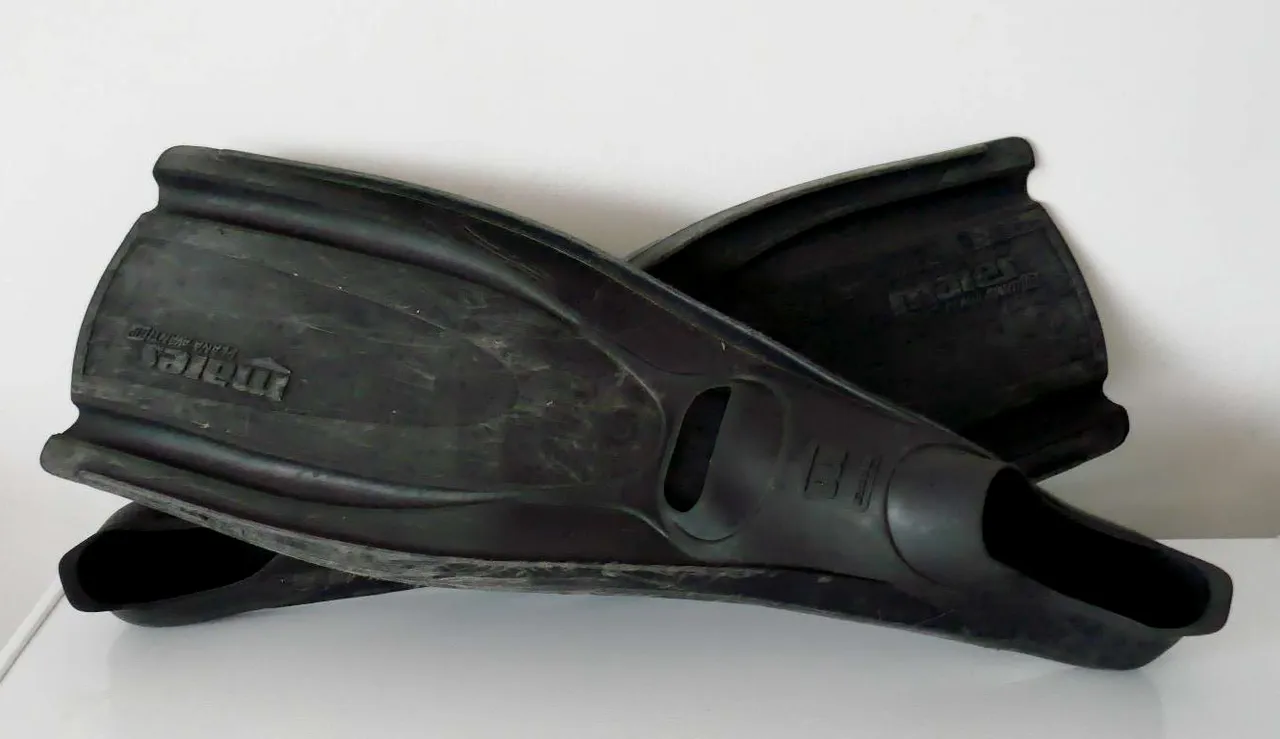
They allow the displacement of the person in the water. They are available in different sizes, according to their intended use. Long for spearfishing and deep free diving. Medium for scuba diving with autonomous equipment, where open-heel fins are usually chosen. Short fins for children, and for archaeological prospecting near the shore, where you have to stand or take small steps.
Wetsuit:
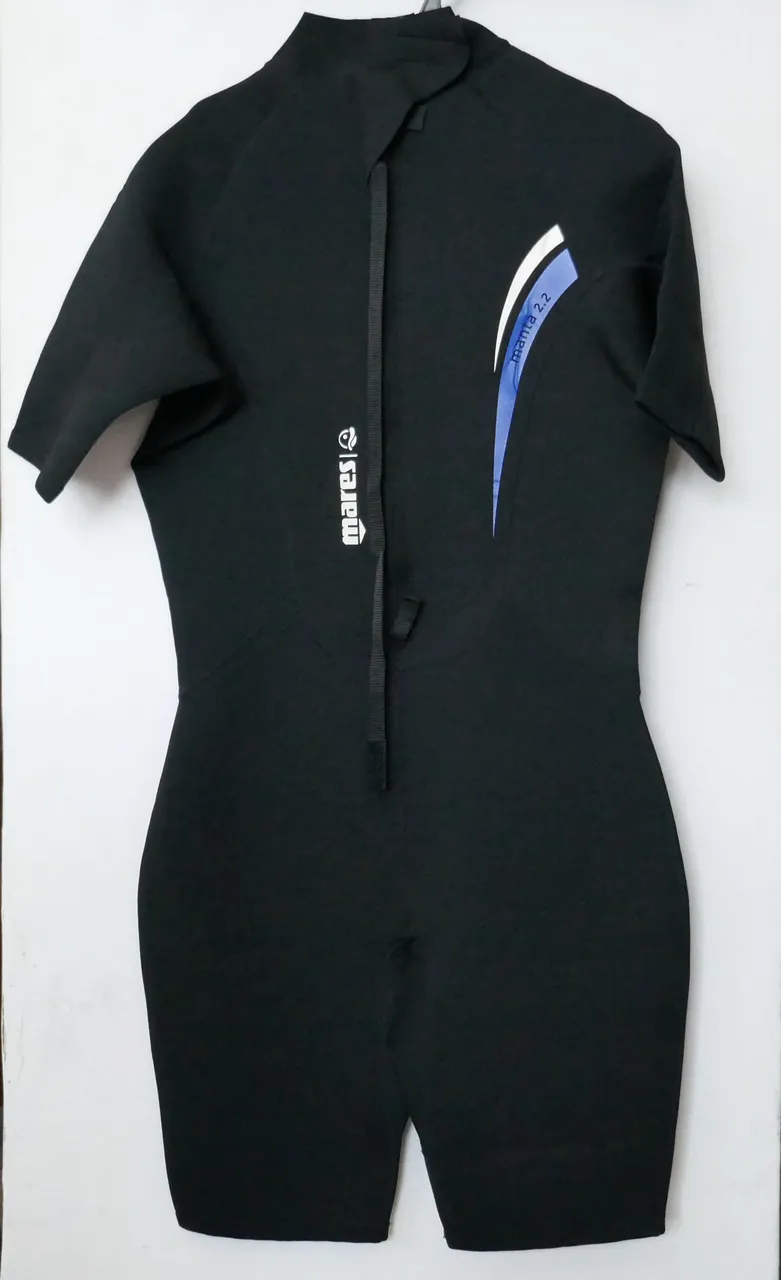
The wetsuit is the means of protection necessary to prevent hypothermia in cold waters and injuries due to contact with marine organisms.
They are available in different materials and thickness. They are chosen according to the average water temperature of the place chosen for diving. They are manufactured in one piece, in two pieces; short as the one in the photo, or covering the whole body. Where a hood and boots can be attached.
The most commonly used are neoprene wetsuit.
Regulator with octopus:
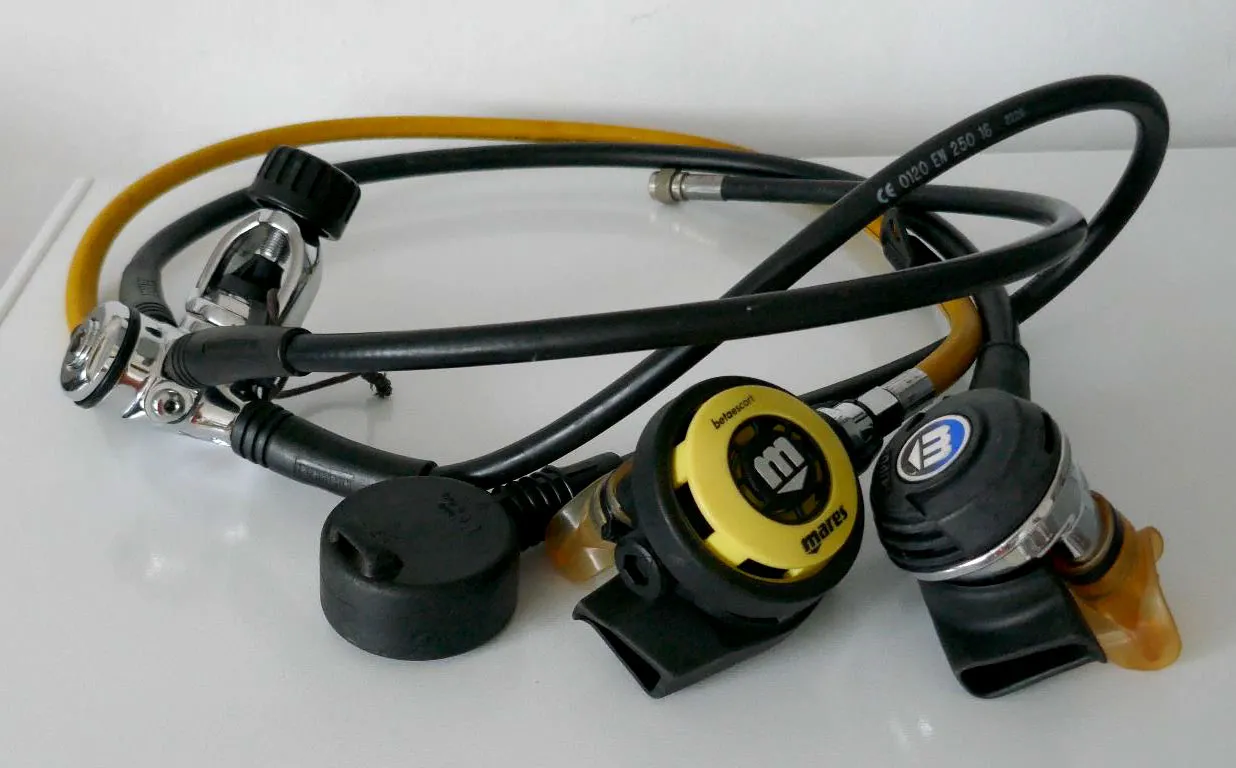
When SCUBA diving, breathing is done with a tank containing a mixture of pressurized gases, e.g. air, nitrox, among others.
A regulator is attached to the tank and consists of 2 basic parts: a first stage, connected by a hose to the second stage, which is the one that the diver holds in his mouth to breathe.
In this picture you can see a complete regulator or octopus. It has the basic elements, and besides, it has a pressure gauge, another auxiliary second stage, and a high pressure hose that attaches to a buoyancy compensator BCD, if you have one.
But I want you to know its parts, in more detail.
First stage of SCUBA regulator:
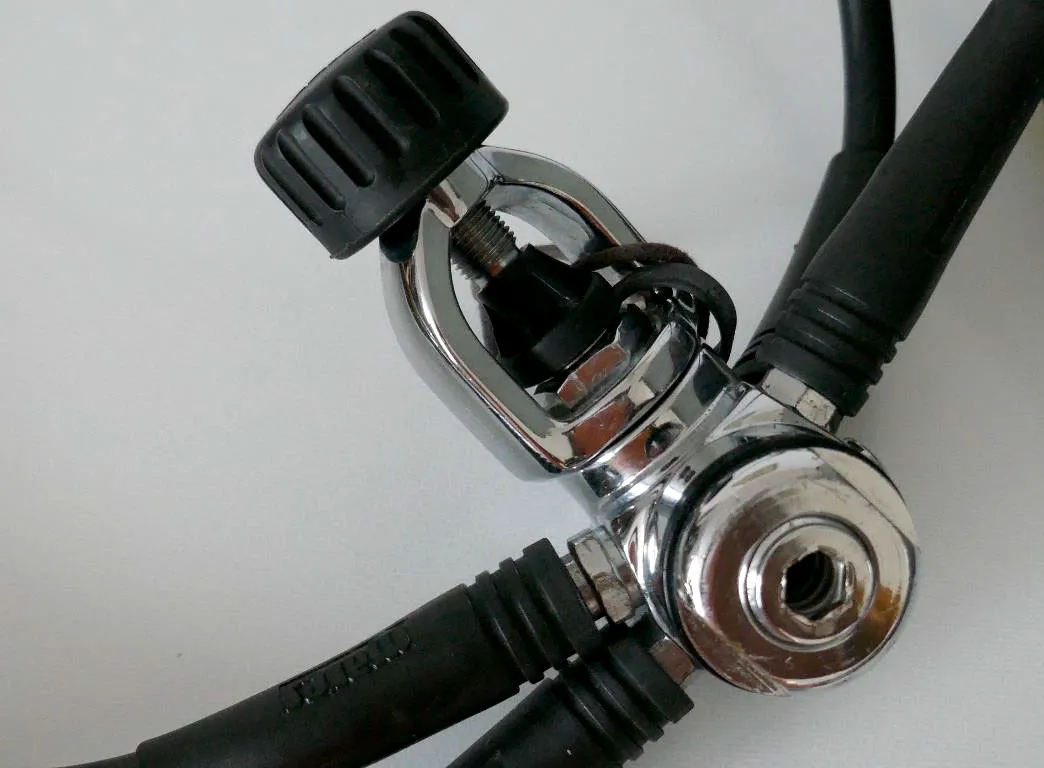
It is the stage that is directly coupled to the tank. It receives the high pressure contained in the gaseous mixture from the tank, and reduces it to an intermediate pressure, thanks to a mechanism that can be membrane or piston. It also distributes high pressure to other hoses for other uses.
Second stage of SCUBA regulator:
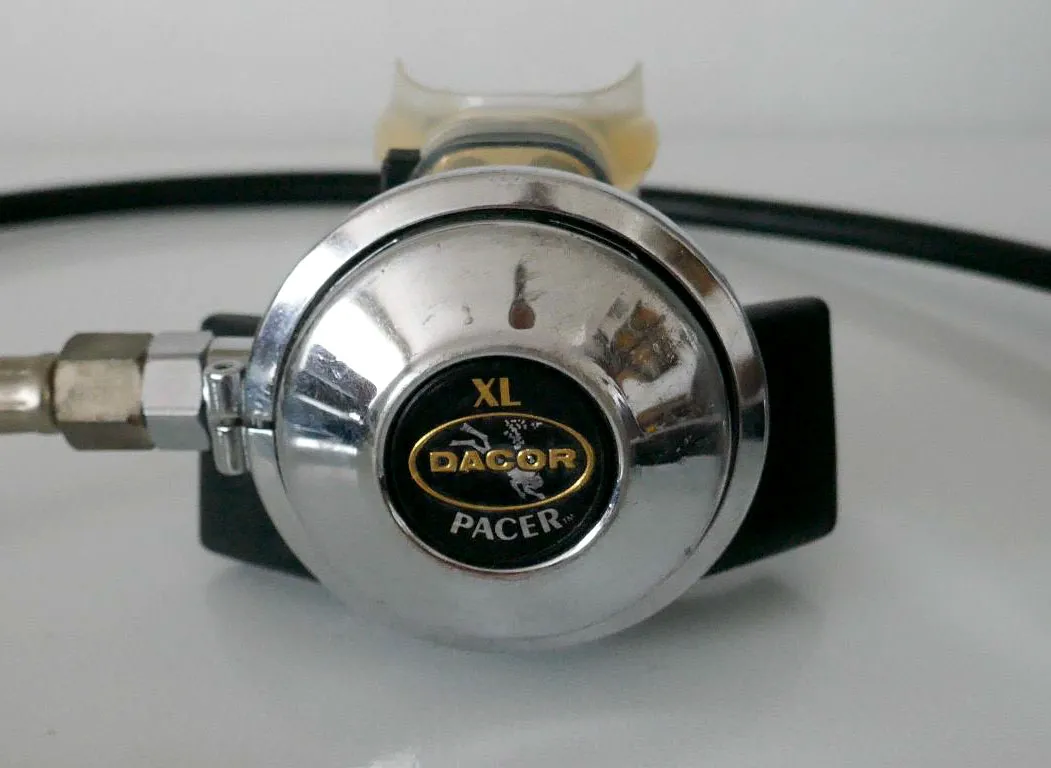
It is the part that the diver holds in his mouth to breathe. Its function is to reduce the intermediate pressure of the gas mixture to ambient pressure.
For the safety of the diver or his buddy, an alternative second stage can be attached. As an international standard, the hose and the cover cap are colored yellow to differentiate them from each other.

Pressure gauge:
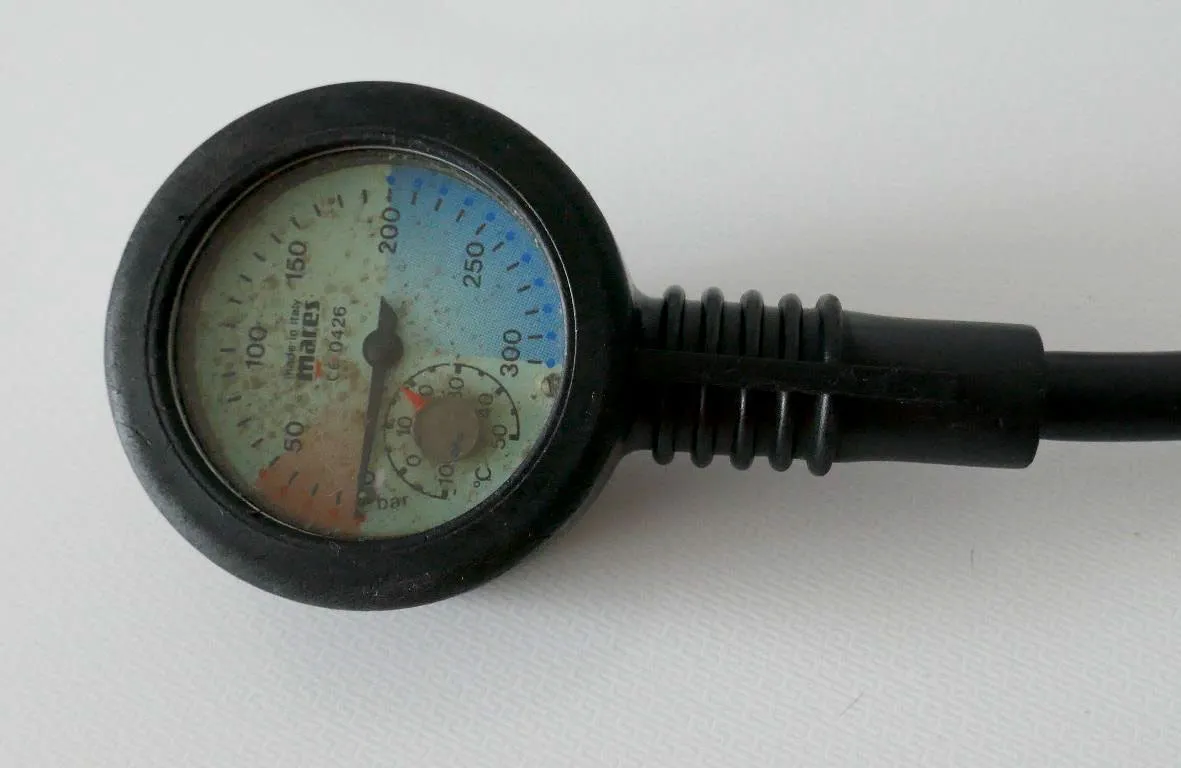
Instrument that shows the pressure of the breathing mixture in the tank. It is connected to the first stage through a high pressure hose.
Sometimes in the same set, other instruments apart from the pressure gauge are joined, and this is what is known as dive gauge consoles.
Dive gauge console:
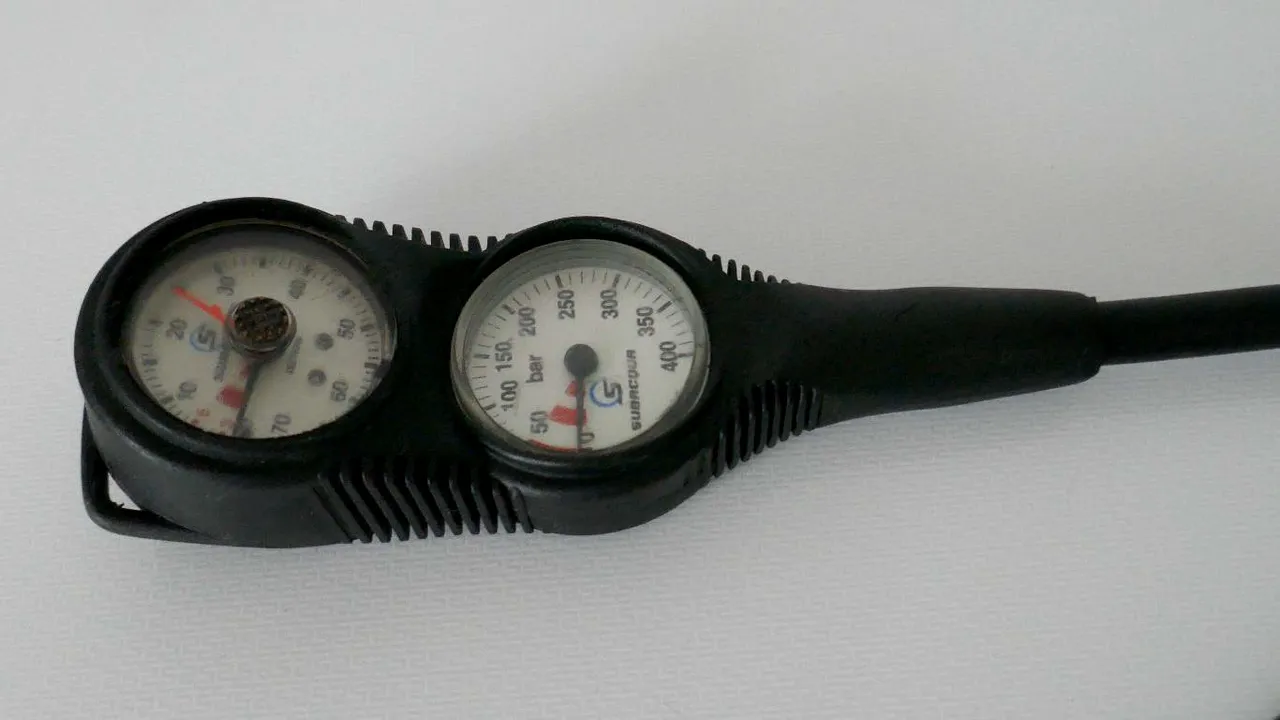
They may contain a pressure gauge with scale in BAR or PSI; depth gauge with scale in meters or feet; and even a compass in some cases.
In the photo below, you can see another regulator with a dive gauge console.
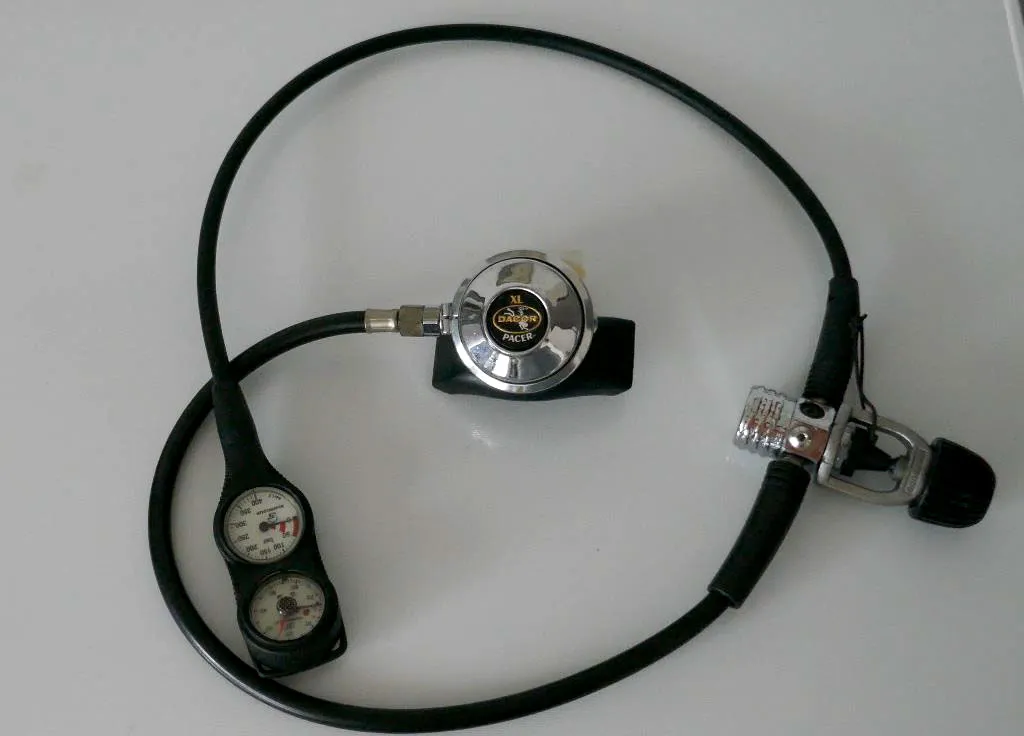
Mini-tank:
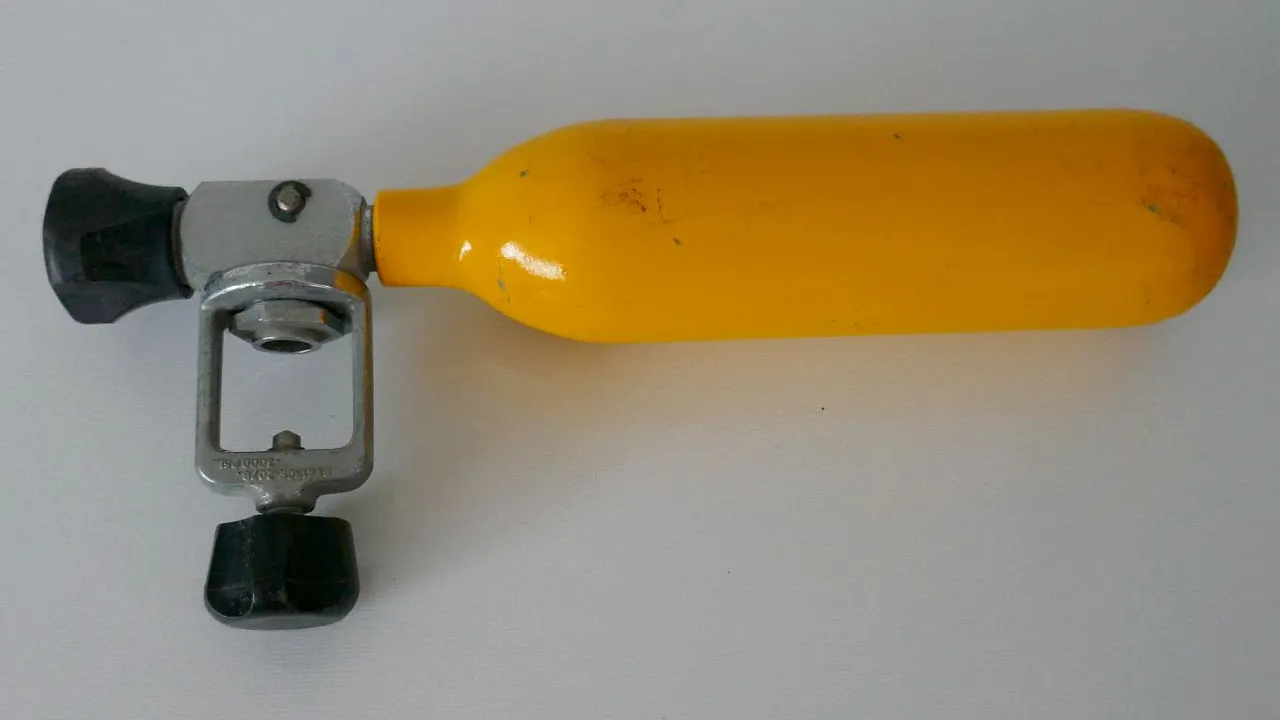
This mini-tank from the French brand La Spirotechnique is already a vintage item. It was used in the first buoyancy compensators as a reservoir supplying pressurized air.
Speargun rubber bands:
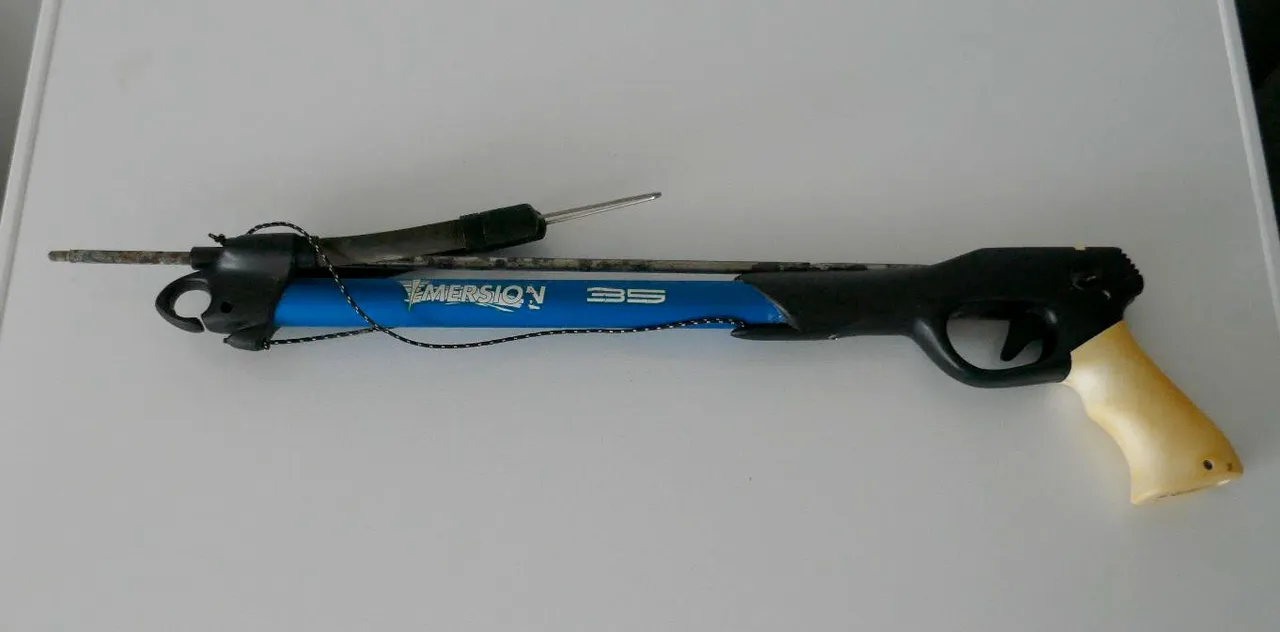
This small speargun, which uses rubber bands to propel the rod, is used for night spearfishing using a flashlight; for catching lobsters, or for finishing off a speared fish with your main speargun.
Tank with backpack:
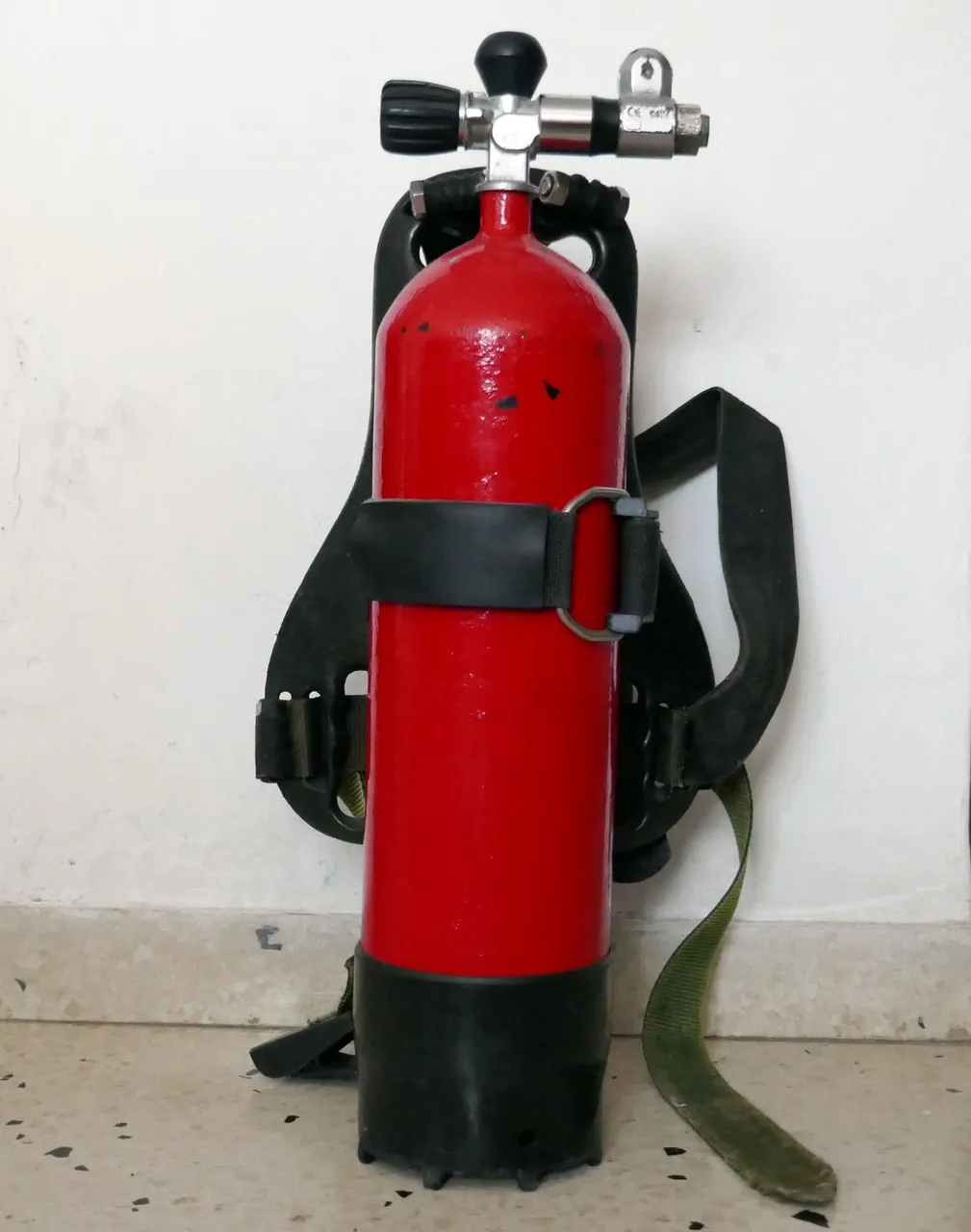
Tanks can be made of steel or aluminum. Their size varies according to their capacity in liters. The bigger the tank, the more diving autonomy you will have; but at the same time, the more weight and less maneuverability.
In the upper part are the keys and the coupling system to the first stage.
As a rule, every year, they must undergo an interior and exterior inspection, and every 5 years, a hydrostatic test. In this way, we can know the integrity of its walls to guarantee a safe diving, and without the danger of it exploding.
The filling of these tanks is done with the tank submerged in a pool of water, and a certified compressor fills it at an average pressure of 200 BAR.
Tank with regulator:
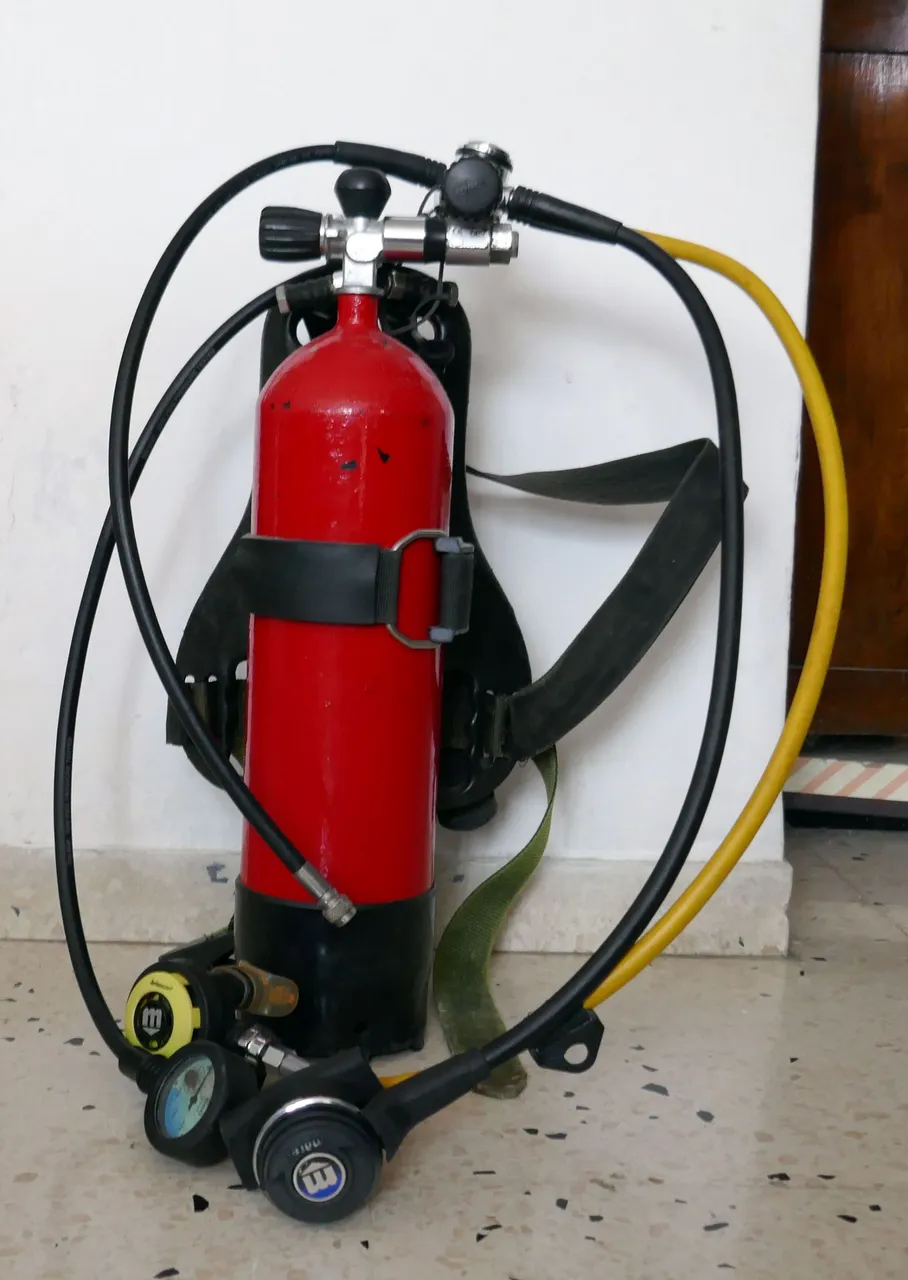
Friends, I hope you have had an idea of the most used equipment for a diving activity. There are others that are also used: the buoyancy compensator BCD, a knife as an auxiliary tool, a dive computer and a weight belt so as not to be in the water with a positive buoyancy.
During a day of spearfishing, a long line that floats in the water is also worn, attached to the speargun at one end, and at the other end, attached to a floating buoy. In case of night diving, flashlights are carried.
We must never forget that diving is a beautiful experience, but in order to feel relaxed and prevent accidents, we must be physically trained, and know some physical laws, the marine flora and fauna that can be dangerous, normal physiology issues and in a hyperbaric environment, some underwater medicine and first aid measures.
In addition, we must always follow the golden rule: Never dive alone.
I wish you all a nice start of the week.

Own photos. Camera: Canon IXUS 175 and Panasonic Lumix DMC-ZS100
Text divider. Free use from @eve66
Text by Andrés Brunet
Thank you for reading
Welcome your comments
Infinite greetings!
